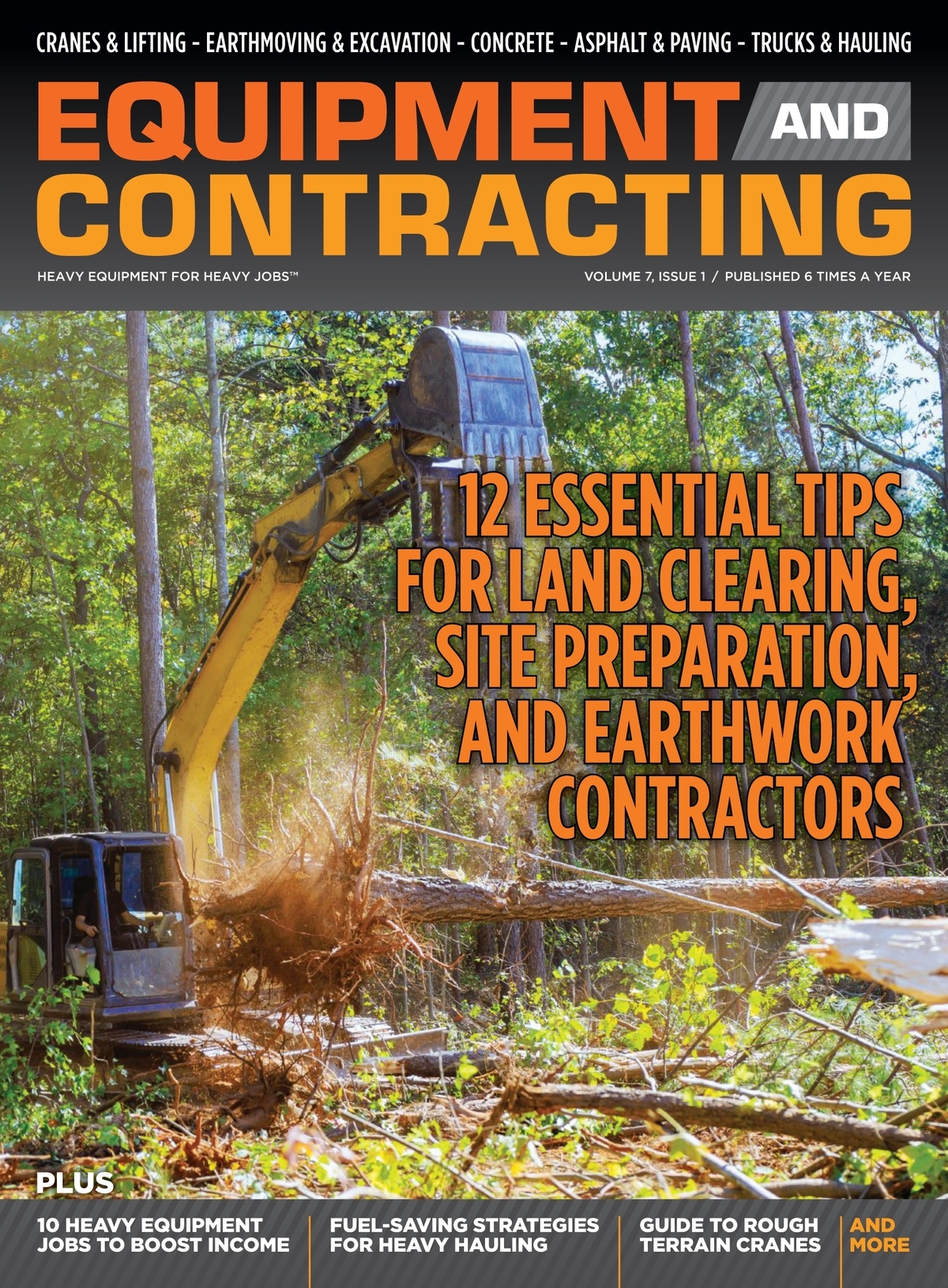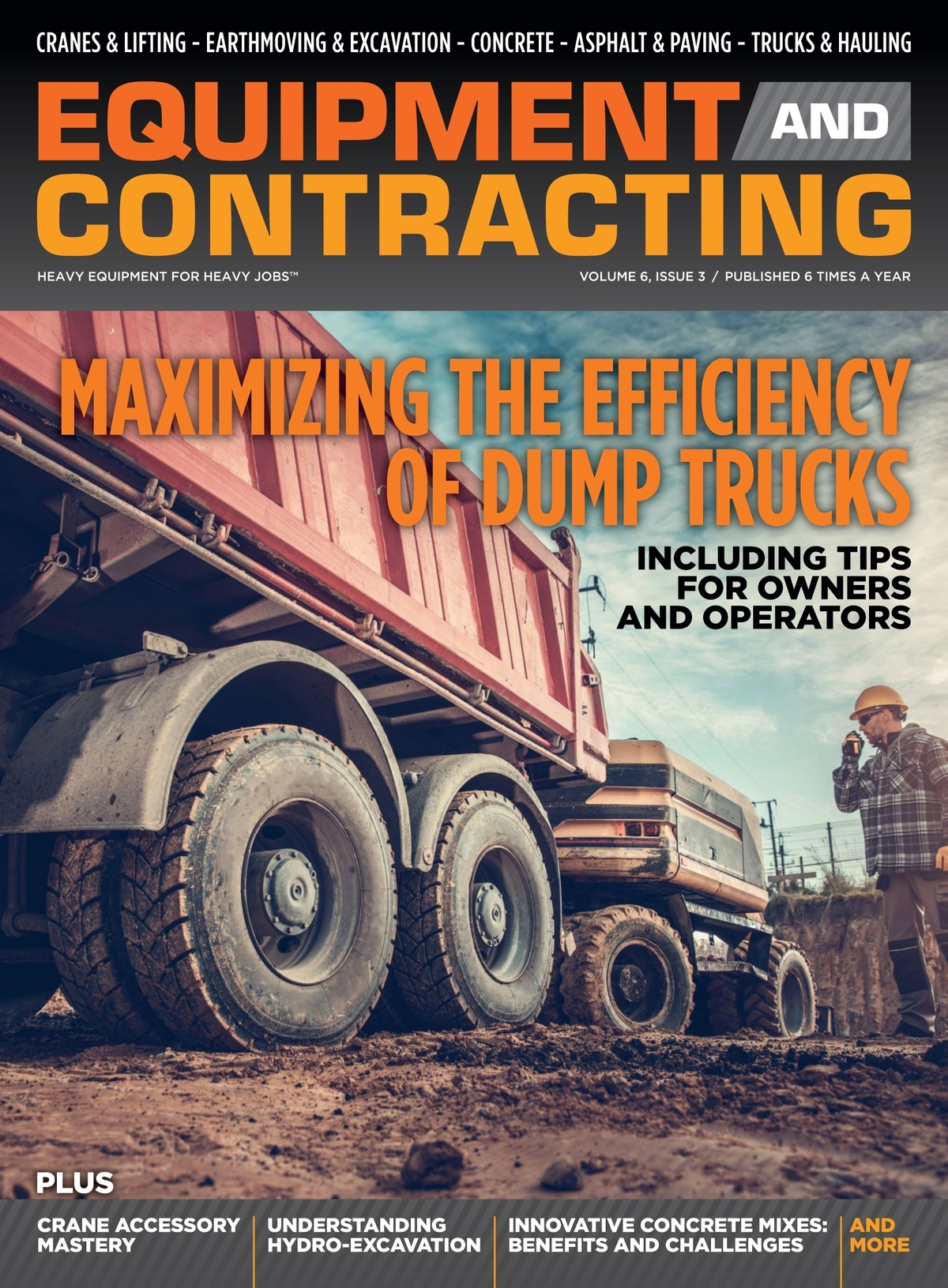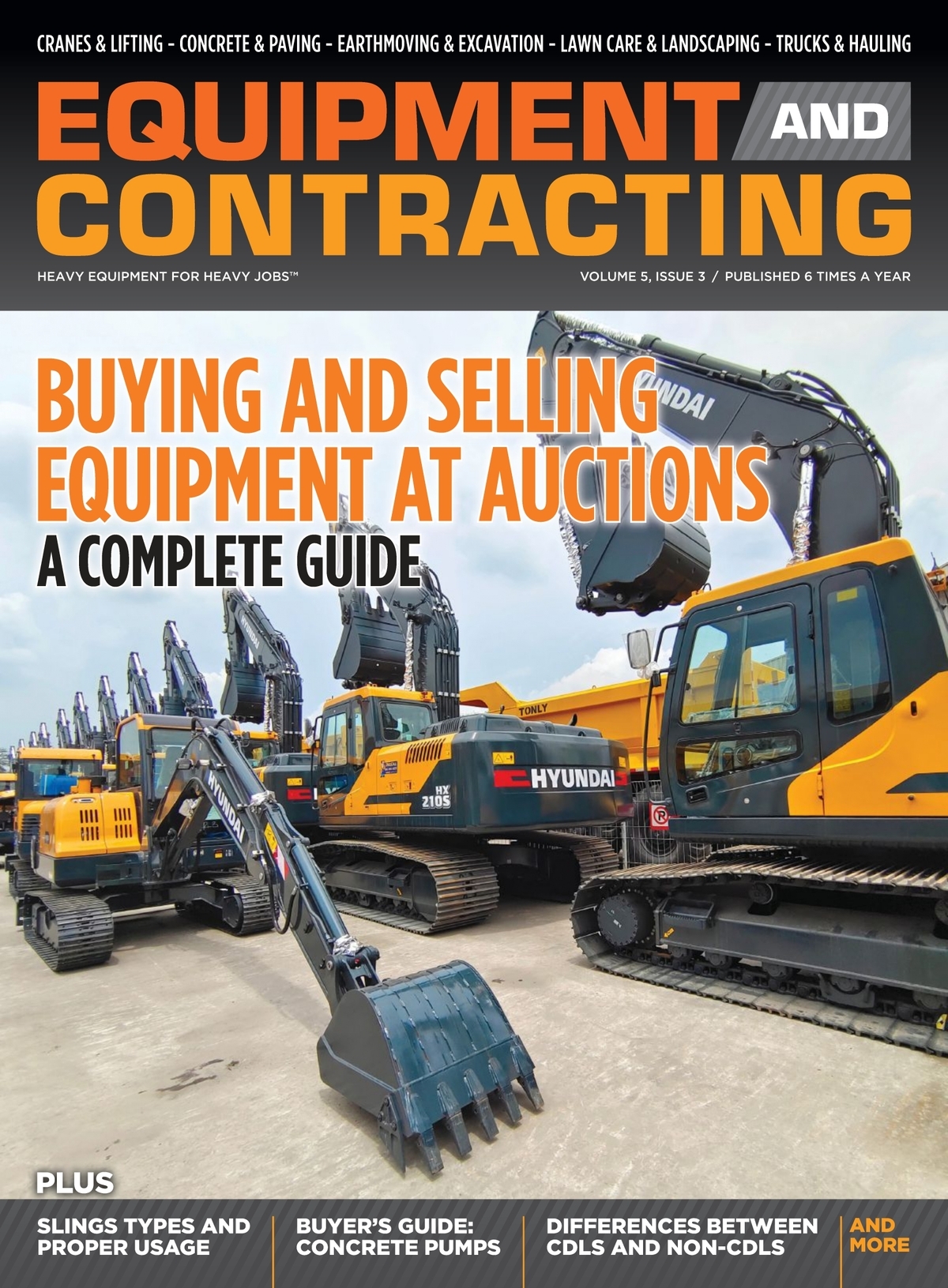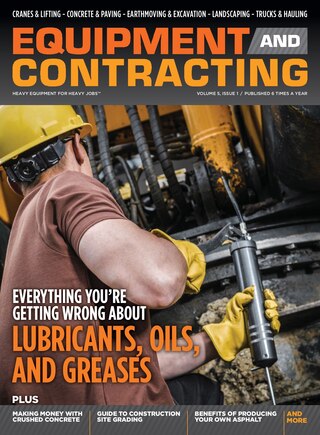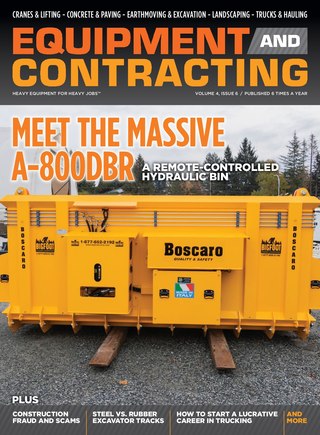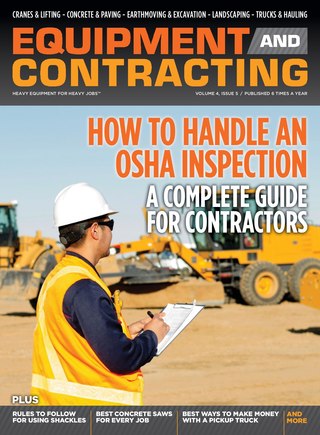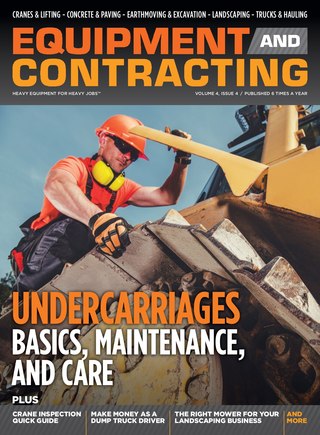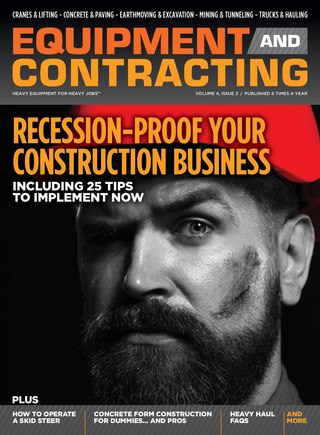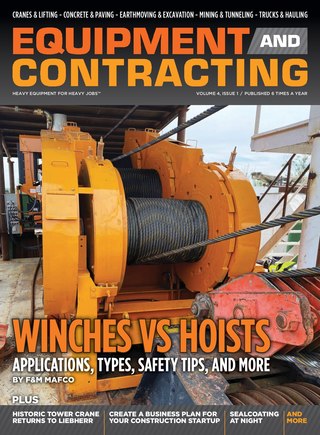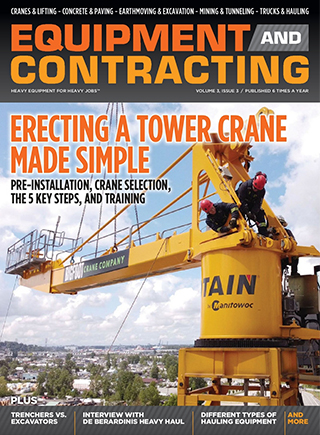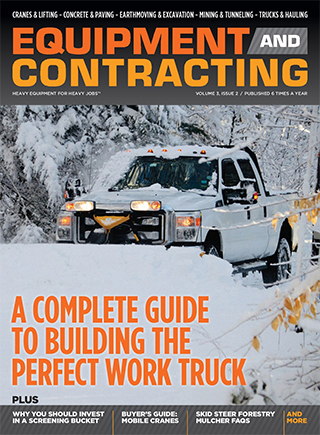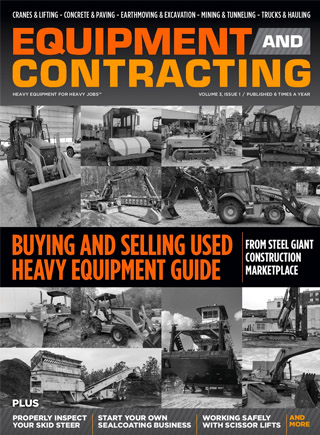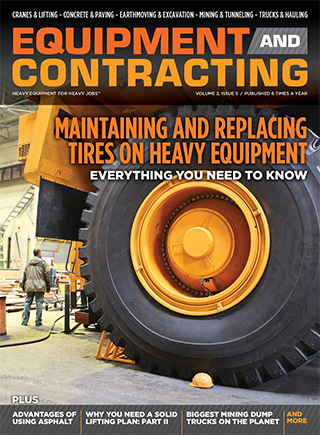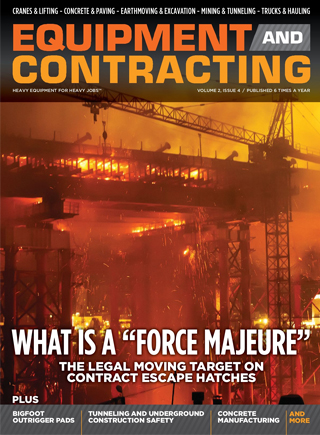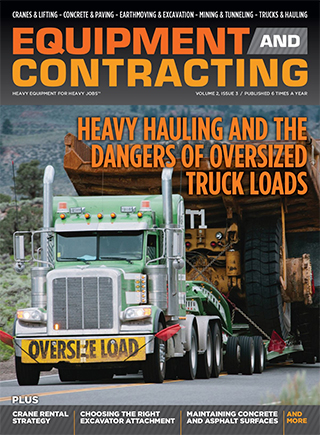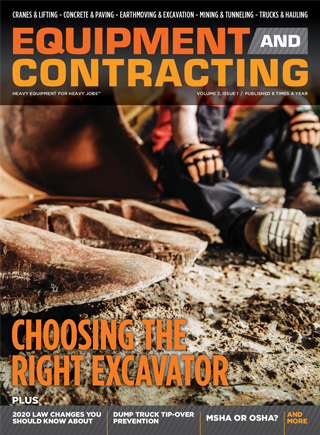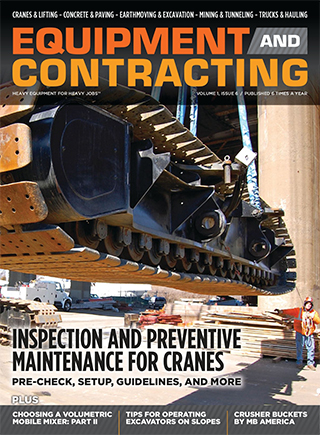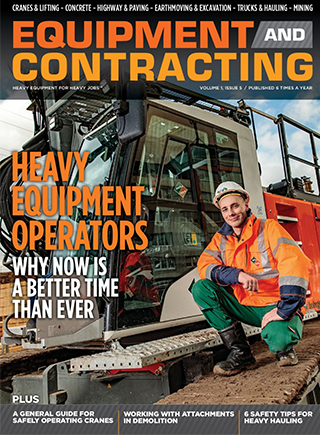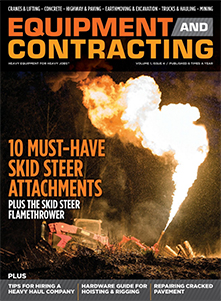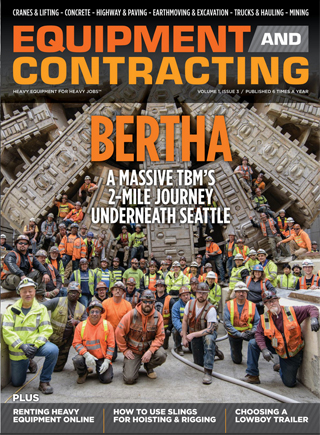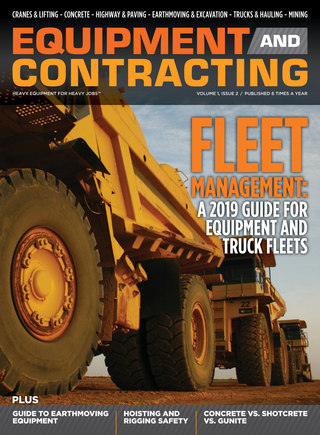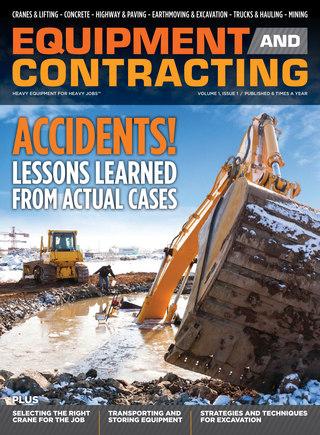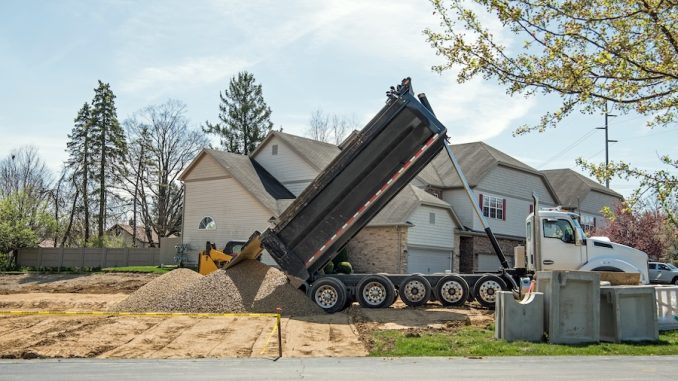
View the complete article here.
Haul trucks are specialized vehicles designed to transport heavy loads in construction, mining, and related industries—including:
- Dump trucks: For hauling aggregates like gravel, sand, or dirt, often used in site preparation or road building (e.g., a 20-ton capacity truck like the Mack Granite, costing $150,000–$200,000 to buy).
- Flatbeds and lowboys: For transporting heavy equipment like excavators, bulldozers, or cranes, with load capacities up to 80,000 pounds (e.g., a Peterbilt 389 with a lowboy trailer, $180,000–$250,000).
- Specialized haulers: For oversized loads like bridge beams or wind turbine components, often requiring permits and escorts.
Contractors rely on these trucks for tasks ranging from delivering materials to moving machinery between sites. The decision to rent or buy depends on factors like project frequency, fleet size, and financial strategy, which we’ll explore in detail.
Pros of Renting Haul Trucks
Renting haul trucks offers flexibility and cost savings for contractors, especially for short-term or variable needs. Here are the key advantages…
Lower Upfront Costs
Renting eliminates the need for a large capital investment. For example, renting a dump truck might cost $1,500–$3,000 per month, compared to a $150,000 purchase price, freeing up cash for other expenses like labor or fuel.
This is ideal for startups or contractors with limited budgets, allowing you to take on projects without tying up capital in equipment.
Flexibility for Project Needs
Renting lets you select the right truck for each job without long-term commitment. Need a lowboy for a one-off equipment haul? Rent one for $500–$1,000 per day instead of buying a $50,000 trailer.
It’s perfect for seasonal or project-specific work, such as a three-month road-building contract, where owning a truck might leave it idle afterward.
No Maintenance or Storage Costs
Rental companies typically handle maintenance, repairs, and storage, saving you $5,000–$10,000 annually per truck in upkeep costs (e.g., tire replacements, engine servicing).
You avoid the hassle of storing trucks during off-seasons, which can cost $500–$1,000 per month for offsite storage or require dedicated yard space.
Access to Modern Equipment
Rental fleets often include newer models with advanced features like fuel-efficient engines or telematics for tracking, improving operational efficiency by 10–15%.
For example, renting a 2024 model with better emissions compliance can help meet regulatory requirements without the cost of upgrading an owned fleet.

Cons of Renting Haul Trucks
While renting offers benefits, it also has drawbacks that may impact long-term profitability and control. Consider these challenges…
Higher Long-Term Costs
Over time, rental fees can exceed the cost of ownership. Renting a flatbed truck at $2,000 per month for three years totals $72,000, compared to a $50,000 purchase price, not including potential resale value.
For contractors with consistent hauling needs, renting can erode profit margins, especially on multi-year projects.
Limited Availability and Customization
Rental availability may be limited during peak seasons, delaying projects by days or weeks and costing $1,000–$5,000 in lost productivity.
You can’t customize rental trucks (e.g., adding reinforced suspensions or specific hitches), which may limit their suitability for specialized hauling tasks like oversized loads.
Dependency on Rental Companies
You’re reliant on the rental company’s schedule and maintenance quality. A poorly maintained truck can break down mid-job, causing delays and potential penalties of $2,000–$10,000 on time-sensitive projects.
Rental agreements often have strict terms, such as mileage limits or damage fees, which can add unexpected costs ($500–$2,000 per incident).
No Equity Build-Up
Renting provides no ownership equity, meaning you don’t build an asset that can be sold or leveraged later. A purchased truck, even after depreciation, might be resold for $50,000–$100,000 after five years.
This lack of equity can hinder long-term financial growth for contractors aiming to expand their fleet.
Pros of Buying Haul Trucks
Purchasing haul trucks offers long-term benefits for contractors with consistent hauling needs. Here are the key advantages…
Cost Savings Over Time
Buying a haul truck provides long-term savings for frequent use. A $200,000 dump truck used over 10 years costs $20,000 annually (excluding maintenance), compared to $36,000 per year for renting at $3,000 per month.
Ownership allows you to recoup costs through resale, potentially recovering 30–50% of the purchase price after use.
Full Control and Customization
Owning a truck gives you complete control over its maintenance schedule, ensuring it’s always job-ready and reducing downtime by 20–30% compared to relying on rental companies.
You can customize trucks to meet specific needs, such as adding heavy-duty suspensions ($5,000–$10,000) for oversized loads or installing GPS tracking for route optimization.
Tax and Financial Benefits
Purchased trucks qualify for tax benefits like depreciation deductions or Section 179 write-offs, potentially saving $10,000–$50,000 in taxes annually, depending on your business structure.
Ownership builds equity, allowing you to use the truck as collateral for loans or sell it to fund fleet expansion, supporting long-term business growth.
Reliability for Ongoing Projects
Owning ensures you always have a truck available, avoiding rental shortages during peak seasons and keeping projects on schedule, which can save $5,000–$20,000 in potential delays.
It’s ideal for contractors with steady work, such as those hauling aggregates daily for road construction, where consistent access to a truck is critical.
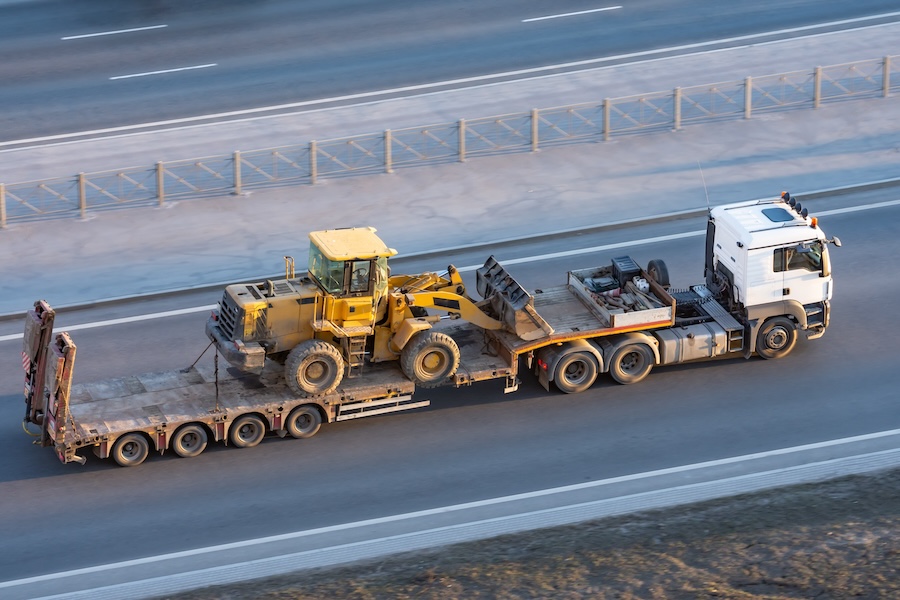
Cons of Buying Haul Trucks
Despite its benefits, buying haul trucks comes with challenges that may not suit every contractor. Consider these drawbacks…
High Upfront Costs
Purchasing a haul truck requires a significant investment—$150,000–$250,000 for a new dump truck or flatbed—tying up capital that could be used for other expenses like payroll or equipment repairs.
Financing options (e.g., 5–7-year loans at 5–8% interest) add $10,000–$20,000 in interest over the loan term, increasing the total cost.
Maintenance and Storage Responsibilities
Owners are responsible for all maintenance, including oil changes ($200–$500), tire replacements ($2,000–$5,000), and engine repairs ($5,000–$15,000), which can total $10,000–$20,000 annually.
Storage costs can be significant if you lack yard space, requiring offsite storage at $500–$1,000 per month or land investment for a dedicated lot.
Depreciation and Resale Risks
Haul trucks depreciate 10–20% annually, reducing their value to $100,000–$150,000 after five years for a $200,000 truck, impacting resale potential.
Market demand for used trucks can fluctuate, and poor maintenance or outdated models may fetch lower resale prices, costing $20,000–$50,000 in lost value.
Limited Flexibility
Owning commits you to a specific truck, which may not suit all projects. For example, a dump truck isn’t ideal for hauling oversized equipment, requiring additional rentals ($1,000–$3,000 per job).
Idle trucks during slow periods still incur costs like insurance ($2,000–$5,000 per year) and storage, reducing overall profitability.
Key Factors to Consider When Deciding
To determine whether renting or buying is right for your business, evaluate these key factors based on your operational and financial needs…
Project Frequency and Duration
If you have consistent hauling needs (e.g., daily aggregate transport for a multi-year road project), buying is more cost-effective, saving $20,000–$50,000 over three years compared to renting.
For short-term or seasonal projects (e.g., a three-month site prep job), renting avoids idle equipment costs and provides flexibility, saving $5,000–$10,000 in storage and maintenance.
Budget and Cash Flow
Contractors with limited cash reserves or tight margins benefit from renting, as it requires no upfront investment and preserves cash for other expenses, like $50,000 in project materials.
If you have access to capital or financing, buying builds equity and reduces long-term costs, offering a better return on investment for steady operations.
Fleet Size and Scalability
Small fleets or growing businesses may prefer renting to test different truck types before committing to purchases, avoiding $150,000–$250,000 in potential missteps.
Larger fleets with predictable needs benefit from buying, as owning multiple trucks ensures availability and supports scalability for new projects, adding $100,000–$200,000 in annual revenue.
Maintenance Capabilities
Contractors with in-house mechanics and maintenance facilities can handle the upkeep of owned trucks, saving $5,000–$10,000 annually compared to outsourcing repairs.
Those without maintenance resources should opt for renting, as rental companies manage repairs, reducing downtime by 10–20% and avoiding $2,000–$5,000 in unexpected repair costs.
Regulatory and Project Requirements
Some projects require specific trucks (e.g., low-emission vehicles for urban jobs), which may be easier to access through rentals, ensuring compliance without a $200,000 investment.
Buying ensures you have trucks tailored to your most common projects (e.g., a lowboy for frequent equipment hauls), improving efficiency by 15–20% on recurring tasks.
View the complete article here.
Should I rent or buy haul trucks for my construction projects?
Rent if your needs are short-term or seasonal; buy if you require trucks regularly for long-term savings and control.
What are the main cost differences between renting and buying haul trucks?
Renting has lower upfront costs but higher long-term expenses, while buying requires a large initial investment but saves money over time.





